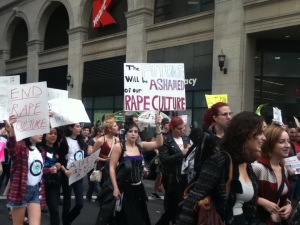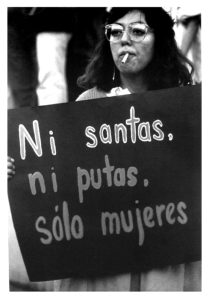On January 24, 2011, a Toronto Police Representative stated, “women should avoid dressing like sluts in order not be victimized.” This comment sparked a fuse in the minds of five womyn who decided enough was enough; they sought to seek accountability and speak out against the constant victim blaming associated with sexual assault. Now, womyn all over the world are using their freedom of expression to speak against the ignorance of society.
More than 3,000 people marched and rallied in efforts to be heard in the NYC SlutWalk. Womyn, some top-less, and men walked around displaying signs with powerful messages. SlutWalk supporters stressed messages such as teaching men not to rape and teaching womyn not to be silenced because of shame.
According to The National Center for Victims of Crime, in 2006, research found that rape victims accompanied by an advocate were more likely to have police reports filed and to be treated less negatively by police officials. A survey taken by approximately 9,700 people found that 10.6% of womyn and 2.1% of men reported experiencing forced sex sometime in their lives (Centers for Disease Control and Prevention).
“SlutWalk is a worldwide grassroots movement challenging rape culture, victim blaming, and slut shaming, and working to end sexual and domestic violence.” SlutWalk also takes place internationally in countries such as: Argentina, Chile, Denmark, Australia, France, and the UK.
(Information courtesy of http://www.slutwalknyc.com/, http://www.slutwalktoronto.com/)
Visit the sites listed for extra coverage from the walk and to SUPPORT!
(Photo(s) Source: My sister and her iPod)


